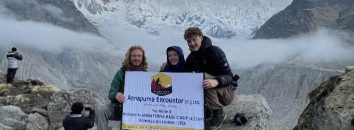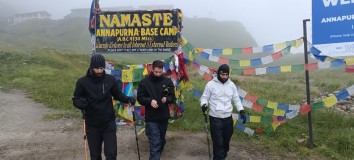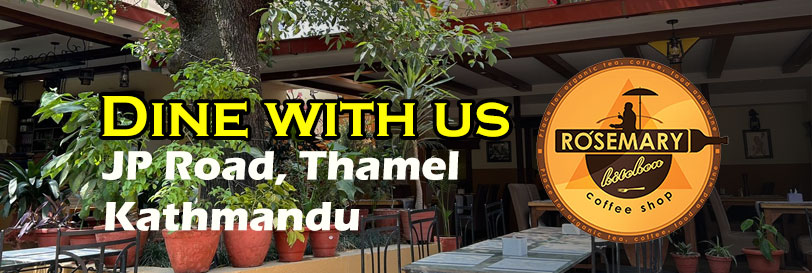Overview And Highlights
The 7 Days Annapurna Base Camp (ABC) Trek is a compact yet immersive Himalayan adventure that begins and ends in Pokhara. Designed for those with limited time, this updated itinerary offers a convenient drive-in and drive-out approach, eliminating unnecessary walking days without compromising on the rich cultural and scenic experience.
Starting with a drive from Kathmandu to Pokhara, the trek begins from Jhinu Danda, allowing quick access to the main ABC trail. From here, trekkers hike through lush rhododendron forests, cascading waterfalls, and vibrant Gurung villages like Chhomrong. As you ascend past Bamboo, Dovan, and Deurali, the landscapes transform into alpine terrain dominated by snow-capped peaks.
The highlight of the trek is Annapurna Base Camp (4,130m), located in the heart of the Annapurna Sanctuary. Surrounded on all sides by towering peaks such as Annapurna I, Machhapuchhre (Fishtail), and Hiunchuli, it offers an awe-inspiring 360° view you won’t forget.
After sunrise at ABC, you descend through Bamboo and Jhinu Danda before driving back to Pokhara. This route is ideal for trekkers who want maximum value in a limited timeframe—without missing the best views, villages, and base camp moments.
Best Seasons for Annapurna Base Camp Trek
| Season | Months | Temperature (ABC) | Trail Conditions | Visibility & Views | Crowd Level | Recommendation |
|---|---|---|---|---|---|---|
| Spring | March–May | -3°C to 12°C | Dry, blooming forests | Excellent | Moderate to High | ⭐ Best Season |
| Autumn | Sept–Nov | -5°C to 10°C | Clear skies, mild weather | Crystal clear | High | ⭐ Peak Season |
| Winter | Dec–Feb | -10°C to 5°C | Snow-covered, cold | Excellent on clear days | Low to Moderate | ❄️ For Snow Lovers |
| Monsoon | June–Aug | 2°C to 15°C | Wet, muddy, leech-prone | Poor | Very Low | 🚫 Not Recommended |
🎒 Detailed Packing List – Annapurna Base Camp Trek (7 Days)
🧥 Clothing
Base Layers (Moisture-wicking):
-
2–3 quick-dry t-shirts (preferably synthetic or merino wool)
-
1–2 thermal tops (for sleeping and cold mornings)
-
1–2 thermal leggings/base layer bottoms
Insulation Layers:
-
1 fleece or down jacket (essential for ABC overnight)
-
1 softshell or insulated vest (optional)
Outer Shell:
-
1 waterproof & windproof jacket with hood (Gore-Tex or similar)
-
1 pair waterproof trekking pants
Trekking Pants & Shorts:
-
2 trekking trousers (convertible to shorts if possible)
-
1 pair trekking shorts (for warmer lower altitudes)
Sleepwear & Undergarments:
-
2–3 pairs of breathable underwear
-
2–3 pairs of warm socks (wool or thermal)
-
2–3 pairs of trekking socks
-
Comfortable sleeping clothes
Accessories:
-
Lightweight gloves (fleece or synthetic)
-
Warm insulated gloves (for cold mornings)
-
Warm wool/fleece hat (covers ears)
-
Sun hat or cap
-
Neck gaiter or buff (dust, wind, sun protection)
👣 Footwear
-
Hiking boots: Well broken-in, ankle support, waterproof
-
Camp shoes or sandals: For evenings at teahouses/hot springs
-
Gaiters: Optional (for wet trails or snow in winter)
🏕️ Trekking Gear
-
Backpack (35–45L): For daily essentials (you carry this)
-
Duffel bag (70L): For porter to carry your main gear (provided)
-
Rain cover (for backpack)
-
Sleeping bag (-10°C to -15°C): Provided or bring your own
-
Trekking poles: Provided or bring collapsible ones
-
Headlamp: With extra batteries (essential for early starts)
-
Water bottles (2x 1L) or hydration bladder
-
Water purification tablets or filter (LifeStraw/Sawyer)
🧼 Personal Hygiene
-
Quick-dry towel
-
Biodegradable soap/shampoo
-
Toothbrush, toothpaste
-
Wet wipes (essential – limited showers)
-
Hand sanitizer (carry extra)
-
Sunscreen (SPF 50+)
-
Lip balm with SPF
-
Small pack of tissues/toilet paper
-
Nail clipper, tweezers
-
Menstrual products (if applicable)
-
Personal hygiene kit
💊 First Aid & Medications
-
Personal medication (enough for the full trek)
-
Diamox (for altitude, consult doctor before use)
-
Painkillers (ibuprofen/paracetamol)
-
Anti-diarrheal (e.g., Imodium)
-
Rehydration salts / electrolytes
-
Blister care (moleskin, Compeed, band-aids)
-
Antiseptic cream & bandages
-
Motion sickness tablets (for drive)
-
Throat lozenges (dry mountain air)
📱 Electronics & Documents
-
Mobile phone + charger
-
Power bank (10,000–20,000 mAh recommended)
-
Camera + batteries/memory card
-
Adapter (Nepal uses Type C/D/M plugs, 230V)
-
Headphones
-
Passport & 2 copies (photo page)
-
Travel insurance (printed copy)
-
Trek permits (provided by company)
-
Cash (NPR for snacks, water, Wi-Fi, charging, tips)
🍫 Optional But Useful
-
Snacks (protein bars, nuts, chocolate)
-
Energy gels or hydration tablets
-
Journal or small book
-
Lightweight thermos flask
-
Hot water bottle (for sleeping in cold)
-
Lightweight day blanket (for teahouse use)
-
Packing cubes or dry bags for organization
-
Small sewing/repair kit
🏷️ Packing Tips:
-
Keep your daypack under 7–8kg
-
Porter carries max 12kg per trekker in duffel bag
-
Layering is key: temperatures vary from 0°C to 25°C
-
Label gear clearly if renting from us
Annapurna Base Camp Trek – 7 Days Cost ; Group Pricing (Per Person in USD)
| Group Size | Budget Package | Standard Package | Premium Package |
|---|---|---|---|
| 1 Person (Solo) | $450 | $880 | $1,350 |
| 2 People | $400 | $790 | $1,190 |
| 3–7 People | $370 | $740 | $1,080 |
| 8–12 People | $340 | $700 | $1,000 |
| 13–20 People | $320 | $660 | $930 |
✅ Budget = permits + guide + local bus/jeep + tea houses, no meals
✅ Standard = meals, porter, 3★ hotel in Pokhara, private jeep
✅ Premium = 5★ hotel, deluxe jeep/helicopter option, best lodges, extras
Itinerary Expand All Close All
Drive Duration: 6–7 hours
Travel by tourist vehicle through river valleys and terraced farmlands to the lakeside city of Pokhara.
Overnight: Hotel in Pokhara
Meals: Breakfast, Lunch & Dinner
Accomodation
Hotel
Elevation
950
Drive: 3–4 hours | Trek: 2 hours
After breakfast, drive through Nayapul and Samrung to Jhinu. Cross the Modi Khola and climb to Chhomrong—a scenic Gurung village with superb views.
Overnight: Lodge in Chhomrong
Meals: Breakfast, Lunch & Dinner
Food
BLD
Accomodation
Teahouse
Elevation
2170
Trek Duration: 6–7 hours
Descend to Chhomrong Khola and climb through dense forest past Sinuwa, Bamboo, and Dovan to reach Himalaya.
Overnight: Lodge in Himalaya
Meals: Breakfast, Lunch & Dinner
Food
BLD
Accomodation
Teahouse
Elevation
2920
Trek Duration: 6–7 hours
Climb to MBC and continue into the Annapurna Sanctuary to reach the base camp. Sunset or sunrise views from here are unforgettable.
Overnight: Lodge in ABC
Meals: Breakfast, Lunch & Dinner
Food
BLD
Accomodation
Teahouse
Elevation
4130
Trek Duration: 6–7 hours
After morning photography and breakfast, descend through the same trail, retracing steps to Bamboo.
Overnight: Lodge in Bamboo
Meals: Breakfast, Lunch & Dinner
Food
BLD
Accomodation
Teahouse
Elevation
2310
Trek Duration: 4–5 hours | Drive: 3–4 hours
Climb to Chhomrong, descend to Jhinu Danda for lunch and optional hot spring visit. From Jhinu, drive back to Pokhara.
Overnight: Hotel in Pokhara
Meals: Breakfast, Lunch & Dinner
Food
BLD
Accomodation
Teahouse
Elevation
950
Drive Duration: 6–7 hours
Drive through scenic hills and riversides to reach Kathmandu by late afternoon.
Meals: Breakfast & Lunch
Food
BLD
Accomodation
Teahouse
Elevation
1350
Services Included on Price
Cost Includes
Includes:
- Accommodation
- Tea house/lodge stays during trek (basic, twin-sharing)
- Transport
- Local bus/jeep Pokhara → Nayapul/Jhinu Danda (trek start)
- Local bus/jeep return to Pokhara
- Airport pick-up in Pokhara (if needed)
- Meals
- Not included – trekkers pay directly at lodges
- Guide & Porter
- Licensed, English-speaking trekking guide
- No porter service (optional at extra cost)
- Permits & Fees
- Annapurna Conservation Area Permit (ACAP)
- TIMS card
- Extras
- Pre-trek briefing in Pokhara
- Basic first aid kit with guide
Cost Excludes
- Meals in Pokhara & during trek
- Hotel accommodation in Pokhara
- Porter service (optional)
- Personal trekking gear (jackets, poles, sleeping bag, etc.)
- Hot showers, Wi-Fi, charging in lodges (paid locally)
- Travel insurance (mandatory)
- International airfare & Nepal visa fees
- Alcohol, bottled water, snacks
- Tips for guide, porter, driver
- Costs due to delays/weather/natural disasters
Standard Package Service Excludes
- Accommodation
- 1 night in 3★ hotel in Pokhara with breakfast
- Tea house/lodge stays during trek (twin-sharing)
- Transport
- Private jeep Pokhara → trek start point & return
- Airport transfers in Pokhara (if needed)
- Meals
- Breakfast in Pokhara
- All meals during trek (breakfast, lunch, dinner with tea/coffee)
- Guide & Porter
- Licensed, English-speaking trekking guide
- Porter service (1 porter for 2 trekkers, 15–20 kg)
- Permits & Fees
- Annapurna Conservation Area Permit (ACAP)
- TIMS card
- Extras
- Pre-trek briefing
- First aid kit with oximeter
Standard Package Service Excludes
- Lunch & dinner in Pokhara
- Personal trekking equipment (rentable in Pokhara)
- Hot showers, Wi-Fi, charging in lodges (paid locally)
- Travel insurance
- International airfare & Nepal visa fees
- Alcohol, bottled water, snacks
- Tips for guide, porter, driver
- Extra costs due to delays/weather
Luxury Package Service Includes
- Accommodation
- 1 night in 4–5★ hotel in Pokhara with breakfast
- Best available lodges during trek (attached bathroom where possible)
- Transport
- Private deluxe jeep Pokhara → trek start point & return
- Optional helicopter return from ABC to Pokhara (upgrade available)
- Luxury transfers in Pokhara
- Welcome & farewell dinners in Pokhara
- Meals
- All meals during trek with wide menu options
- Breakfast in Pokhara
- Welcome & farewell cultural dinners
- Guide & Porter
- Senior trekking guide
- Porter service (20–25 kg per porter)
- Staff insurance included
- Permits & Fees
- Annapurna Conservation Area Permit (ACAP)
- TIMS card
- Extras
- Loaner trekking gear (sleeping bag, down jacket, trekking poles)
- Emergency evacuation coordination (insurance required)
- Daily health monitoring with oximeter
- Sightseeing assistance in Pokhara
Luxury Package Service Excludes
- International airfare
- Nepal visa fees
- Comprehensive travel insurance
- Personal expenses (souvenirs, laundry, phone calls)
- Alcohol, bottled water, soft drinks
- Tips for guide, porter, driver
- Optional upgrades (helicopter, single supplement)
- Costs due to delays/weather/natural disasters
Annapurna Base Camp Trek - 7 Days Altitude Profile
FAQs
This trek is considered moderate. It includes daily hikes of 5–7 hours with some steep ascents and descents. Prior trekking experience is helpful but not mandatory. It’s doable for active trekkers with average fitness.
The highest point is Annapurna Base Camp (4,130m / 13,550 ft). The itinerary is designed to gradually ascend, reducing the risk of altitude sickness.
While the risk is lower compared to other high-altitude treks, mild altitude symptoms like headache or fatigue may occur. Staying hydrated, ascending slowly, and resting adequately helps prevent AMS.
You’ll stay in:
-
Local teahouses/lodges along the trekking trail (basic but clean)
-
Standard hotel in Pokhara before and after the trek
All rooms are on a twin-sharing basis. Single rooms can be arranged at extra cost, subject to availability.
Yes. Full board meals (breakfast, lunch, dinner) are included during the trek, along with tea/coffee. Meals are served at teahouse restaurants with typical Nepali and Tibetan-style cuisine.
Yes. Annapurna Encounter arranges both:
-
ACAP (Annapurna Conservation Area Permit)
These are included in the package cost.
The best seasons are:
-
Spring (March–May) – clear skies and blooming rhododendrons
-
Autumn (September–November) – stable weather and great visibility
Winter is also possible with proper gear. Monsoon (June–August) is not recommended due to slippery trails and leeches.
Most lodges offer charging and Wi-Fi, but:
-
Charging is often charged extra ($2–3)
-
Wi-Fi may be slow or intermittent at higher altitudes
We recommend carrying a power bank and a local SIM card (NTC or Ncell) with data.
Yes. You can store extra bags safely at our storage facitlity in Kathmandu.
You must have travel insurance that covers:
-
High-altitude trekking (above 4,000m)
-
Emergency evacuation by helicopter
-
Medical treatment abroad
Carry both digital and printed copies during your trek.
Tipping is expected and appreciated in Nepal. We recommend:
-
$15-20/day for guides
-
$10-15/day for porters
It’s best to give tips at the end of the trek as a group gesture.

.jpg)
.jpg)
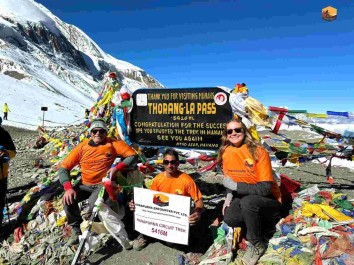
-1.jpg)
.jpg)
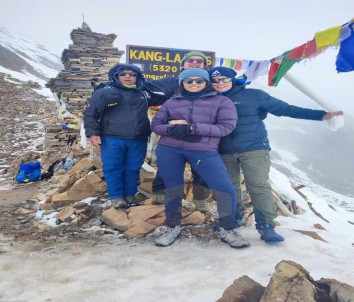
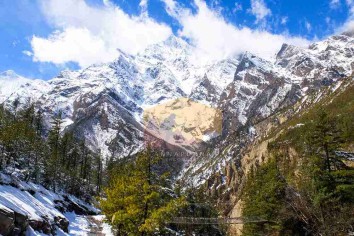
.jpg)
.jpg)
_11zon.jpg)
_11zon.jpg)
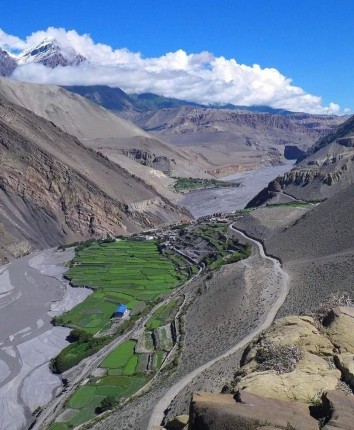
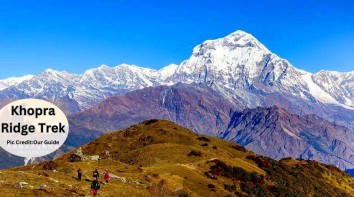
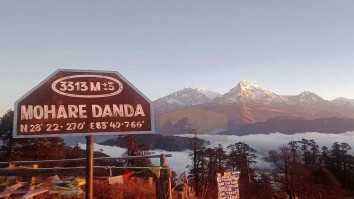
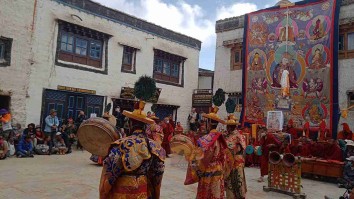

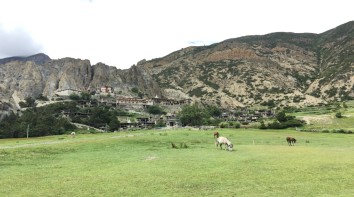
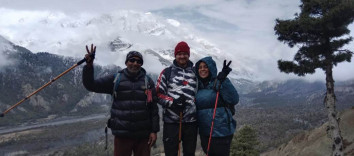
.jpg)
